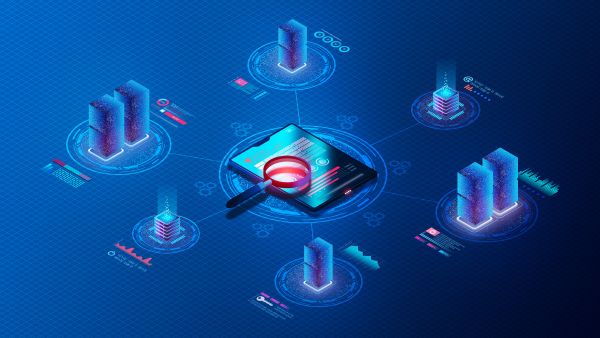
Artificial intelligence (AI) is one of the most transformative technologies of recent years, bringing massive boosts to virtually every industry globally. Its ability to automate and learn/improve from previous data is extremely useful when applied to cybersecurity, offering new ways for businesses to enhance security measures. AI technologies can automate complex processes and improve the accuracy and speed of threat detection and response. In this article, we explore the multifaceted roles and benefits of AI in modern cybersecurity, as well as some challenges that require consideration.
Upsides of AI in Cybersecurity
Adopting AI in cybersecurity brings several transformative benefits that significantly enhance organizational security postures. These advantages include increased efficiency, reduced response times, and the ability to manage more complex security environments.
Speed and Accuracy
AI technologies can process and analyze data at a scale and speed far beyond human capabilities. This rapid processing power enables real-time threat detection and response, which is crucial for mitigating the impact of attacks. AI algorithms can quickly sift through terabytes of data to identify potential threats, drastically reducing the time between threat detection and response.
Scalability and Adaptability
As organizations grow and their digital infrastructures expand, AI-driven cybersecurity solutions can scale accordingly. Unlike traditional security solutions that may require significant manual adjustments or additional resources, AI systems can adapt automatically to increased workloads and evolving security needs. This adaptability is particularly valuable when data volumes and exchange rates continuously increase.
Cost-effectiveness
Although the initial investment in AI technology can be substantial, the long-term cost savings are significant. By automating routine tasks and improving the efficiency of security teams, AI can reduce the need for sizable manual security operations. Additionally, the increased accuracy of AI in detecting and responding to threats can decrease the costs associated with security breaches, such as data recovery, legal fees, and reputation damage.
Proactive Security Posture
One of the most significant benefits of AI in cybersecurity is the shift from a reactive to a proactive security posture. AI’s predictive capabilities allow organizations to anticipate and prepare for potential threats before they become active issues. This proactive approach reduces the risks associated with cyber threats and enables better strategic planning for future security needs.
Overview of AI in Cybersecurity
As mentioned above, AI’s ability to rapidly analyze and learn from massive volumes of data makes it an invaluable ally in the war against cybercrime. Traditional security measures often struggle to keep up with the sophisticated tactics employed by modern cyber attackers. AI; however, can process and analyze data at a scale and speed impossible for human teams, allowing for more rapid identification of potential threats and vulnerabilities.
Current Applications of AI in Cybersecurity
-
Threat Detection: AI systems are adept at identifying threats by analyzing patterns and anomalies in data. For example, machine learning algorithms can monitor network traffic and spot unusual behaviors that may indicate a breach, such as data being exported to an unfamiliar location.
-
Zero-day Attack Detection: Zero-day attacks, which exploit previously unknown vulnerabilities, present a challenge for traditional cybersecurity measures. AI enhances the capability to detect these threats by identifying suspicious behavior patterns that deviate from established norms, even without prior knowledge of the specific vulnerability. By continuously learning and adapting, AI systems can provide an essential layer of defense against such attacks, significantly reducing the potential damage they can cause.
-
Behavioral Analytics: Apart from recognizing known threats, AI excels in behavioral analytics, which involves monitoring user behavior to detect anomalies that may indicate malicious intent or compromised accounts. AI-driven behavioral analytics can track user activities across multiple vectors—such as login times, the volume of data accessed, and network request patterns—to flag activities that fall outside the norm.
-
Fraud Detection: In financial services, AI detects patterns consistent with fraudulent activities. AI systems can learn from historical data to accurately identify fraudulent transactions, reduce false positives, and help secure transactions.
-
Phishing Prevention: AI is increasingly employed to identify phishing attempts. By analyzing emails’ content and comparing it against known phishing examples, AI can alert users to potentially malicious emails before they cause harm.
-
Security Automation: AI-driven automation tools can manage tasks such as patching software, scanning for vulnerabilities, or configuring security parameters, freeing human security experts to focus on more complex issues.
-
Incident Response: AI can assist in responding to security incidents by automatically containing breaches and mitigating damage. For instance, an AI system might automatically isolate affected network segments upon detecting suspicious activity.
Challenges of Implementing AI in Cybersecurity
While AI presents many opportunities for enhancing cybersecurity, it also introduces several significant challenges that organizations must navigate. These range from technical and logistical hurdles to ethical and governance issues, each impacting the effectiveness and integrity of AI-driven security systems.
Technical Integration Challenges
Integrating AI into existing cybersecurity infrastructures is not straightforward. It often requires substantial upgrades to existing hardware and software and changes to network configurations. This integration must be done carefully to ensure that AI systems can communicate effectively with other cybersecurity tools, such as intrusion detection systems and security information and event management (SIEM) systems. Additionally, because AI systems require substantial computational power, organizations may need to invest in more powerful servers or cloud-based services, which can be costly.
Data Privacy and Security
AI systems depend heavily on data to learn and make decisions. Collecting, storing, and processing large volumes of sensitive data raises significant privacy concerns. Organizations must ensure that they comply with data protection regulations, such as GDPR in Europe or CCPA in California, which can complicate the implementation of AI in cybersecurity. Furthermore, the data used to train AI models must be protected from tampering and unauthorized access to prevent the AI system from being misled or corrupted.
AI Bias and Error
AI systems are only as good as the data on which they are trained. If the training data is biased or contains errors, the AI system’s decisions may be flawed. This can lead to false positives or negatives in threat detection, undermining trust in AI systems. Additionally, attackers can exploit these biases through adversarial machine learning, deliberately inputting data to confuse the AI and evade detection.
Maintenance and Re-training
AI models in cybersecurity need continuous updating and maintenance to stay effective. Cyber threats are constantly evolving, and AI systems must evolve with them. This requires ongoing training with new data, regular model assessments, and updates—a process that can be resource-intensive and requires skilled personnel.
Ethical and Legal Considerations
The use of AI in cybersecurity also raises ethical questions, such as the extent to which organizations should rely on automated systems to make decisions that could have serious implications, like blocking access to critical systems or data. There are also legal implications, particularly around accountability, when AI systems make errors that lead to security breaches or data loss.
The Role of Generative AI In Cybersecurity
Generative AI, a subset of artificial intelligence that focuses on creating new data from existing data sets, has promising applications in the field of cybersecurity. With its ability to generate realistic data, this technology can enhance various aspects of cybersecurity, including threat detection and incident response. Here are some keyways generative AI can be applied in cybersecurity and relevant use cases.
Enhanced Threat Simulation
Generative AI can help create sophisticated threat simulations that mimic real-world cyberattacks. These simulations help cybersecurity teams test and improve their defenses against potential threats. By generating realistic attack scenarios, organizations can better understand their vulnerabilities and prepare for a wide range of cyber threats.
Malware Detection
Generative AI can be used to create new variants of malware, which can then be used to train detection systems. This helps improve the robustness of cybersecurity solutions by ensuring they can identify and mitigate even novel or slightly altered malware strains.
Anomaly Detection in Network Traffic
Generative AI can model normal network traffic patterns and detect anomalies that may indicate a cyberattack. By learning what typical network behavior looks like, generative AI systems can identify deviations from the norm, which are often indicative of malicious activities.
Synthetic Data Generation for Privacy-Preserving Analysis
Generative AI can create synthetic data sets that are statistically similar to real data but do not contain any actual sensitive information. This allows organizations to perform security analysis and testing without compromising data privacy.
Proactive Phishing Detection
Generative AI can generate numerous phishing email templates based on known patterns, which can be used to train machine learning models to detect phishing attempts more accurately. This proactive approach helps in identifying and mitigating phishing attacks before they reach end-users.
Dynamic Honeypots
Generative AI can create dynamic honeypots that adapt to different attack strategies in real-time. These honeypots can attract and deceive attackers, providing valuable insights into their methods and techniques without compromising actual systems.
Conclusion
As we have explored, AI can have a huge impact on cybersecurity, offering unprecedented capabilities in threat detection, incident response, and risk management. Its integration into cybersecurity strategies allows organizations to respond more efficiently to incidents and anticipate and mitigate potential threats proactively. However, the journey to harness the full potential of AI in cybersecurity is accompanied by significant challenges, including technical integration, ethical considerations, and the need for continuous adaptation to evolving threats. But by proceeding carefully and considering the obstacles, you can reap the benefits and make AI an effective tool to improve your cybersecurity framework.
Thank you for trusting us to help with your cybersecurity needs. Contact us any time – we’re always happy to help.
Adam


